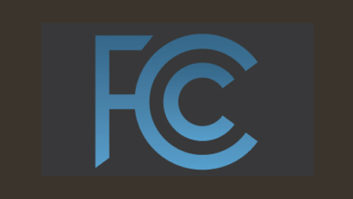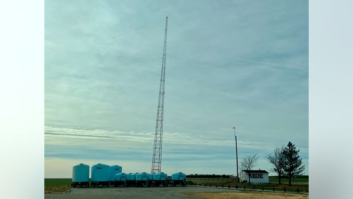The author is an electronic engineer with the International Broadcasting Bureau/Broadcasting Board of Governors in Washington.
In fiscal 2010, the International Broadcasting Bureau implemented Amplitude Modulation Companding in 19 high-power radio transmitters, contributing to annual energy savings of 17.7 million kilowatt-hours and a cost savings of $2.17 million, despite a rising utility rate.
Prior to converting, these transmitters used energy savings methods such as ACC, CCM, DCC or DAM. In this paper, we compare the various MDCL methods, calculate theoretical consumption and discuss the exploitation of the receiver’s automatic gain control, peak RF voltages and audio processor settings for optimum savings. Our experiences and observations are provided for those who wish to save energy using MDCL.
The IBB decided to use, where possible, the MDCL method called AMC, which was created by the British Broadcasting Corp. in 1984 and implemented with digital signal processors in 1994. By the end of fiscal 2010, the 19 transmitters had been converted to AMC. Energy savings data is shown on the transmitters in Thailand, the Commonwealth of Northern Mariana Islands and Sri Lanka. (See Figs. 1 and 2.)

Fig. 1: Energy usage surrounding conversion to AMC of transmitters in Thailand, the Commonwealth of Northern Marina Islands and Sri Lanka in FY10.

Fig. 2: Consumption data for transmitters converted to AMC in FY10
an the simple detailing of consumption of electricity using a particular form of MDCL. Factors related to international broadcasting complicate matters, and must be mentioned to clarify the numbers. Aspects to consider include currency exchange rates, fluctuating program schedules, ionospheric propagation issues and maintenance-related subjects.
Electricity consumption of the 19 converted transmitters dropped from 39.2 million kWh to 20.8 million kWh from the end of fiscal 2009 to the end of fiscal year 2011. The conversions took place during fiscal 2010, so these numbers were in transition during FY 2010. If we normalize the drop in consumption by the drop in program hours, we arrive at an effective 21.5 million kWh.
BACKGROUND OF IBB
The Broadcasting Board of Governors is the independent federal government agency that oversees U.S. civilian international broadcasting. BBG networks serve as indispensable sources of news for people who often lack access to independent information. The board is composed of nine experts in the fields of mass communications, broadcast media or international affairs, who are appointed by the president and confirmed by the Senate. The secretary of state serves ex officio. The International Broadcasting Bureau provides transmission, marketing and program placement services for all BBG broadcast organizations.
The organizations under the BBG are the Voice of America, Radio Free Europe/Radio Liberty, Office of Cuba Broadcasting/Radio and TV Martí, Radio Free Asia, the Middle East Broadcasting Networks and Alhurra TV and Radio Sawa.
The BBG broadcasters reach 187 million people each week with TV (satellite and terrestrial), Internet, mobile, social media and all radio bands in more than 100 countries. Radio remains important in places like Afghanistan, where IBB networks reach 75 percent of adults.
MDCL DEFINITION
The International Broadcasting Bureau has chosen to use a four-letter term MDCL (Modulation-Dependent Carrier Level), to describe the existing three-letter methods of carrier compression for energy savings.
The term MDCL appears in a Continental Electronics article written by J.F. Riley in 1994:
“Terms used to identify differing algorithms (CCM, DCC, DAM and AMC) are either proprietary or closely identified with different manufacturers. A more general term is needed. Program-Dependent Carrier Level and Variable Carrier Power have been proposed. The most descriptive term might be Modulation-Dependent Carrier Level, MDCL.”
When a station uses MDCL, the transmitted RF carrier level is adjusted to save energy at key levels of modulation. The exact relationship between the amplitude modulation percentage and the carrier suppression is described further in the charts that follow. The circuitry used to suppress the carrier is typically located in the audio control stage with a DC control voltage that adjusts the amount of carrier power. The modulation percentage does not change and so the sideband levels are proportional to the suppressed carrier.
MDCL THEORY
The first area to discuss when considering MDCL is the density of program audio, which may be explained in terms of how much of the time audio reaches the peak modulation percentage in a given unit of time. To calculate audio density, the waveform area under 100 percent peak modulation is integrated over time. Not all audio frequencies in the program may produce the same levels of modulation.
Therefore the subject of density is important when discussing MDCL. The program signal may be compared to a square wave with a duty cycle that describes density.
For example, a square wave of 75 percent duty cycle at 100 percent peak is equivalent to operating the transmitter with carrier only for 91 days out of the year, and with 100 percent tone modulation for the remaining 274 days. Likewise, a square wave at 50 percent duty cycle at 100 percent peak would represent operating the transmitter at carrier only for 182.5 days per year and with 100 percent modulation with tone for the other 182.5 days.
Large energy consumption occurs when broadcasting with amplitude modulation. All of the program audio information is in the sidebands, so the carrier itself contains what could be considered wasted energy. Periods of silence still cost money to transmit. Therefore, the chief aim of MDCL is to manage the energy in the carrier with a technique that matches the density level of program audio and satisfies audio quality standards in common receivers.
For example, if the aim is to save the most energy and the program audio is quite dense, AMC would be the clear choice.
MDCL TYPES
There are several types of modulation-dependent carrier level designs as implemented by various transmitter manufacturers:
- • ACC – Adaptive Carrier Control
- • AMC – Amplitude Modulation Companding
- • CCM – Controlled Carrier-Level Modulation
- • DAM – Dynamic Amplitude Modulation
- • DCC – Dynamic Carrier Control
- • AM -None — Standard Amplitude Modulation

Fig. 3: MDCL carrier voltages related to program audio density

Fig. 4: Power consumed normalized to 1 as a ratio with standard “AM”
If the density is very low most of the time, most likely a method of MDCL will be chosen that reduces the carrier when the modulation index is low. If the density is very high most of the time, the best form of MDCL would be AMC. Therefore, the density of the program material must be understood at the beginning when implementing MDCL. The crossover point for energy savings depends on how much of the time the program audio remains at or near peak modulation levels.
MDCL COMPARISONS
It is possible to group the various types of MDCL into two groups. The carrier suppression in group one is opposite that of group two.
In group one, the MDCL techniques are ACC, CCM, DAM and DCC (in alphabetic order). This first group saves energy when no one is talking. A careful compromise between program loudness and energy savings is necessary. For example, the operator may desire to save so much energy that the audio processer settings result in a broadcast that is weak and lacking loudness.
In group two, the MDCL techniques are AMC and E-AMC (Enhanced-AMC). This group saves energy when talking is the loudest. The carrier is compressed as the audio modulation percentage increases and so the word “Companding” is used to describe this style of MDCL. This technique saves the most energy (53 percent at full tone). However, the operator may inadvertently miss the mark when tuning and operate below the desired power level, reducing coverage area.

Fig. 5: RF peak voltages for MDCL with reference to AM
Common to all methods of MDCL is the saving of energy and the resulting lowering of the electric bill and cooling system requirements.
SIGNIFICANCE OF RF PEAK VOLTAGES AND THE RECEIVER’S AGC
RF peak voltages are depicted in Fig. 5 (page 5) with the MDCL type ACC typifying all of those found in group one.
In group one (ACC, CCM, DAM, DCC), the RF voltage starts out as low as half that of standard AM and then rises to the same level as AM. The ratio is up to 4 to 1 or 12 dB (if compared to the fluctuation of AM, it would be a 2-to-1, or 6 dB, ratio). One member of this group (DCC) lessens the swing by using what is referred to as the “bathtub” curve, where carrier voltages are not reduced as much during quiet passages (see Fig. 3).
In group two (AMC), the RF voltage starts out at full carrier and rises until 10 percent modulation and then begins the Companding process. The peak RF voltages for group two is theoretically 1.16 to 1 or 1.1 dB (0.6 dB when contrasted to standard AM). This reduction in the fluctuation of RF peak voltages of AMC is what makes possible the exploitation of a receiver’s AGC circuitry, which is able to lift the signal up and keep it up during all levels of modulation.
A phrase called the “AGC Strain Factor” is introduced to look into how the receiver influences the strength of the incoming signal along with audio loudness.
The AGC Strain Factor chart (Fig. 6) divides the maximum peak RF voltage by the minimum RF voltage to give an AGC stress factor. If the Automatic Gain Control in the receiver does not have a wide variation between peak audio and quiet passages, theoretically the receiver should be able to pick up a weak signal and keep it amplified.
In group two, the RF peak voltage for AMC is nearly constant. Therefore, with AMC, the receiver’s AGC is exploited to compensate for a reduced RF overall signal during maximum modulation.
In group one, the AGC works “harder,” or, it could be said, the AGC strains to keep up with a constantly changing RF peak voltage, which will result in a potential “pumping” of the audio in the fringe areas.

Fig. 6: AGC “Strain Factor”
Noise Considerations at the Fringe Area
Listeners report not noticing any difference between standard AM and MDCL in all family groups when the signal is sufficiently strong that the receiver’s AGC does not have to start amplifying the signal.
When considering signal-to-noise, whether it be jamming or environmental noise, there are compromises that are related to receiver quality and AGC (see “AGC Strain Factor” above).
If a tone is used at 100 percent modulation and a receiver is at the edge of the fringe area, the signal strength of a system using AMC will be 1/2 (20*LOG(0.5) = –3dB) that of a system using the first group which is like standard AM. So, potential for jamming of an AMC system is highest when using a tone.
However, if using program material, the negative effects of jamming are worse for the first group during quiet passages. At strong passages, the receiver noises depend on how the AGC is behaving and whether or not the receiver is locked onto the carrier or has to hunt for the carrier due to the presence of a jamming carrier. The signal strength of the first group (ACC, CCM, DCC, DAM) is approximately 3 dB lower than the AMC system during very quiet passages of no audio. So, noise effects would be worse with group one MDCL when no one is talking; whereas with higher program level modulation, and if the AGC is not “strained” to fluctuate 4 dB, AMC sounds good.
As the receiver progresses furtheraway from the transmitter, noise levels increase and the AGC of the receiver is at maximum increasing potential, chances are best of still hearing some of the signal when using the first group (ACC, CCM, DAM, DCC). The region where this occurs may be a small piece of land, so marketing research and engineering should listen to see if the benefits of energy savings outweigh benefits of a of a louder signal.
For the IBB, in the past year or more of AMC operations, there have been no known complaints of AMC in the receiver areas (though maybe those who could complain do not know how to communicate that complaint back to headquarters because of their remote location).
MDCL POWER CONSUMPTION FORMULAS
Transmitter Consumption Equations

The modulation factor, Mf , is derived from the type of MDCL in use and the modulation percentage.

To write this in terms of what is given,

Where:
ƞT = Overall Efficiency
PT = Power Total (Consumed Power)
PCM = Power of the Carrier Maximum (nameplate power)
PCN = Power of the Carrier Nominal (operating power)
MDCL POWER CONSUMPTION EXAMPLES
Given:
PCM= 500kW, PCN = 250kW, ƞT = 72%, PIP = 10%
M = 90%×88% Average Density = 79.2%, K = 12%
Where M = Effective Modulation percentage, which is the Program level multiplied by the apparent density of the program audio. (See discussion on “Density” under MDCL theory above).

The modulation level determines a new carrier level when using MDCL. The consumed power calculations take into account a reduced carrier level and a corresponding change in power amplifier efficiency at this new carrier level. A fairly typical derating line may be associated with a slope K above.
To further illustrate this point, if a transmitter is operating with a reduced power amplifier output power level during compression or Companding to 50 percent that of nominal power, PA efficiency would decrease by 6 percent as derived from a line with a decreasing slope of 12 percent. This is a “rule of thumb” from experience on various tube-type amplifiers down to about 50 percent. This number may be adjusted more accurately for each transmitter by observing and graphing the slope of degradation of PA efficiency as power is reduced.
The MDCL factor, MDCLf, (see MDCL Correction Factors table) is used to calculate the new carrier power due to carrier compression. For this example, the modulation percentage is applied to the table in the three examples to find the corresponding MDCLf. Then the new carrier power is multiplied by the modulation factor for power out, (1+M/2)2, to find average output power out at the reduced carrier.
Secondly, the new carrier power is also used for calculating derated power amplifier efficiency because we cannot assume that the efficiency of the PA is constant across all power output levels.
[MDCL Example Calculations]
[MDCL Sample Calculations Comparisons]

MODULATION MANAGEMENT
Once the genre of programming is chosen, optimal savings of power requires proper settings on the audio processor.
For maximum energy savings in group one (ACC, CCM, DAM, DCC), it is recommended to use an audio processing style resembling “classical” or “transparent” processing, which has the least amount of audio loudness (or compression) settings.
For maximum energy savings in group two (AMC), it is recommended to use an audio processor setting of “presence” or “loudness.” So, if the modulation meter is always up at full scale, then more energy would be saved with AMC.
AM HD Radio or DRM systems require special consideration for MDCL. A recent study at WOR(AM), reported in Radio World, seems to indicate that AMC does the best for audio clarity and maintaining the HD Radio signal in the receiver. Go to radioworld.com/Apr-18-2012 for the link to this story.
CONSIDERATIONS FOR MAXIMUM BENEFIT
The genre of broadcast determines which MDCL style to use, and the charts in Figs. 3 and 4 help decide which method to choose. The crossover point for modulation density should be examined to determine which method to choose.
The transmitter and audio processor setup and operation become more complex when using MDCL. Care should be taken to set up proper processor settings and proper power levels after switching to an MDCL technique.
With AMC, the audio control circuitry can reduce power slightly more than necessary due to a shift in DC voltage when changing from AM to AMC.
AMC MODULATION MONITOR ERROR
Due to the nature of “double AM” or amplitude modulation twice in the circuit (once with carrier compression related to MDCL, and the other with standard amplitude modulation), most modulation monitors struggle to report modulation accurately. The IBB recommends verification of modulation levels using an oscilloscope for AMC.
The rest of the MDCL types may be verified with standard modulation monitors and transmitter power meters.
IBB HIGH-POWERED RADIO CONSUMPTION STATISTICS
There were 75 million kWh consumed in fiscal year 2011 compared to 98 million kWh consumed fiscal year 2009. This consumption is equivalent to eight hundred (800) U.S.-based transmitters (KFI, KGO, WOR, WLS, WGN, etc.) on the air at full power all year
(74.9M kWh / (8760H * 50kW * 1.45 Modulation / 77% Efficiency = approx. 800).
The IBB has 85 transmitters with a potential simultaneous broadcast of combined 18,970 kW on a given day. Fig. 7 shows the comparison of electrical cost in dollars spent for various MDCL techniques within the IBB as of the end of FY 2011.

Fig. 7: MDCL Example Calculations
OPERATIONAL ISSUES
One site appeared to have a large drop in consumption. The evidence was there to back this up. The water pipes were cooler; less money was spent on cooling, the power meters showed less power, etc. In actuality, the power drop was possibly a bit too much. When a 500 kW transmitter is set to operate at a nominal 250 kW and then AMC is utilized, when peaks of modulation occur, the power meter dips down into a region where tracking might not be reliable, in this case 62 kW.
When the transmitters are switched from AM to AMC, the carrier drops due to the manufacturer’s circuitry. Compensation should normally occur to bring the power back to normal carrier power when there is no modulation. So the problem in this case would be saving more energy than necessary and potentially hurting the quality of the signal at the fringes area.
An operational benefit for AMC would be a reduction in peak voltage, which lengthens the life of tubes, capacitors or other components in the RF chain.
CONCLUSION
In summary, significant energy savings occurred at the IBB after switching 19 transmitters to AMC in early fiscal year 2010 and an additional 28 in 2011. Further savings are expected through reduced high-voltage stress on components, cooling savings and possible tube and capacitor life extensions.
REFERENCES
CCM: Riley, J.F., “Comparison of CCM Techniques”, Continental Electronics Paper, 1994.
DAM: Wysocki, B. and Breitkopf, K., “Energy Savings With Modern PDM-Type High-power Transmitters”, AEG-Telefunken and Rundfunk im amerikanischen Sektor, Germany, 1994.
DCC: Schminke, Dr. W. and Boksberger, H.U., “Dynamic Carrier Control, DCC, a Valuable Method to Save Input Power of Medium Wave Transmitters”, ABB Infocom AG, Switzerland, 1989.
AMC: Bell, C.P. and Williams, W.F., “Implementation of Amplitude Modulation Companding in the BBC MF National Networks”, IEEE Transactions on Broadcasting, Vol 35, No. 2, June 1989.
OVERVIEW: Hardy, T., “Energy Conservation in AM Broadcast Transmitters using Carrier Control Algorithms, NAB Paper, 2009
This paper is based on a presentation prepared by Maxwell for the 2012 NAB Show.







